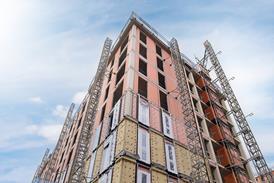The knee-jerk reaction to the victory of the Scottish Parliament at last weekend’s Stirling Prize would be to decry the judges for picking a building that was so woefully managed and hence so famously over time and over budget.
How can QSs and PMs rein in architects in the future if such an extreme example of a project going out of control is singled out for praise? Such an argument is simplistic and ignores exactly how things went wrong at Holyrood. Blame for the inept management of the scheme and the massive increase in budget was laid squarely at the client’s door by last year’s Fraser report. And surely the long-term value and quality of a building should be taken into account rather than the basic front-end cost? Former Davis Langdon boss Paul Morrell, whose firm was the QS on this job, has long argued such as case.
One cannot ignore the end product at Holyrood. The project team, who have still yet to extricate themselves from the scheme a year after its completion, deserve praise for realising the design to such high standards under such extreme public scrutiny and pressure. The prize owes nearly as much to their determination and commitment as the original architectural vision.
More concern over the lack of skilled staff, if you needed it. This time it could be the exodus of the thousands of South Africans and Australians that have filled empty posts in the last decade. Some bosses have already noticed that the influx has slowed down. Now former Hyder head Denis Lillie, who is himself relocating to South Africa, reckons that there are at least 100,000 South Africans applying to return home. Work is picking up in the country ahead of the 2010 World Cup, which is luring staff back and Lillie points to how “aggressive” the UK marketplace has become. Hence the urgent need for homegrown recruits.
Source
QS News




















